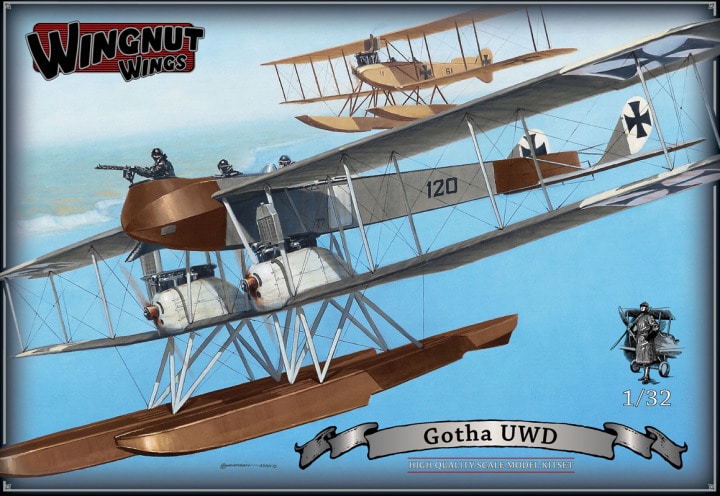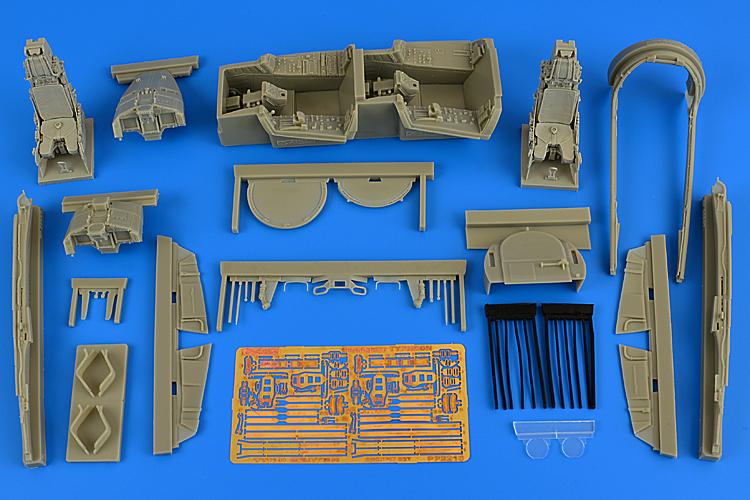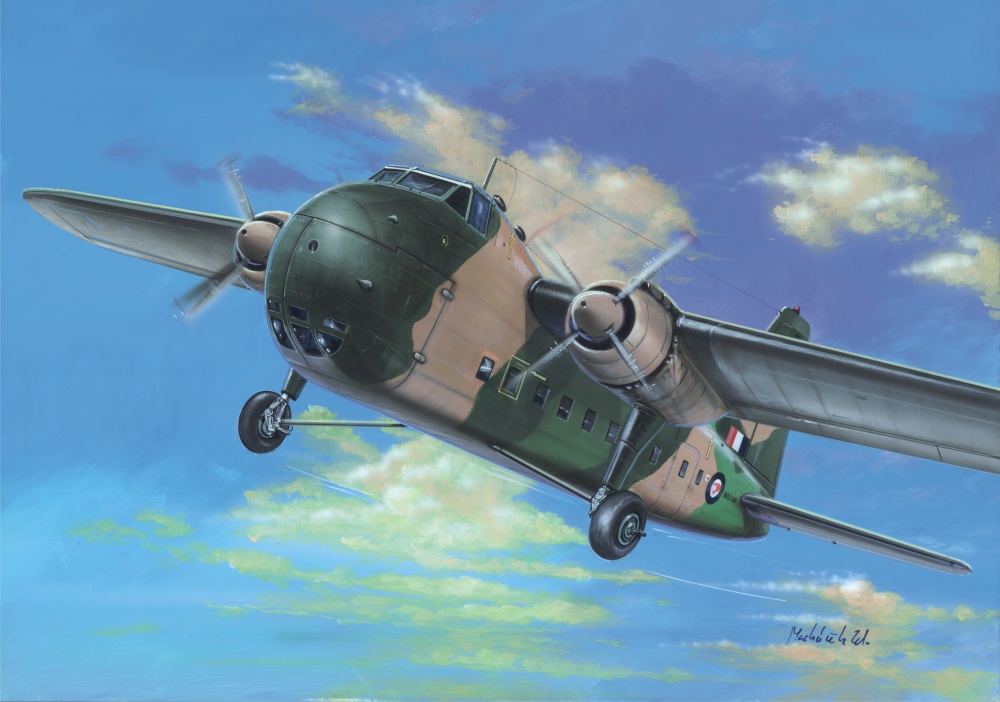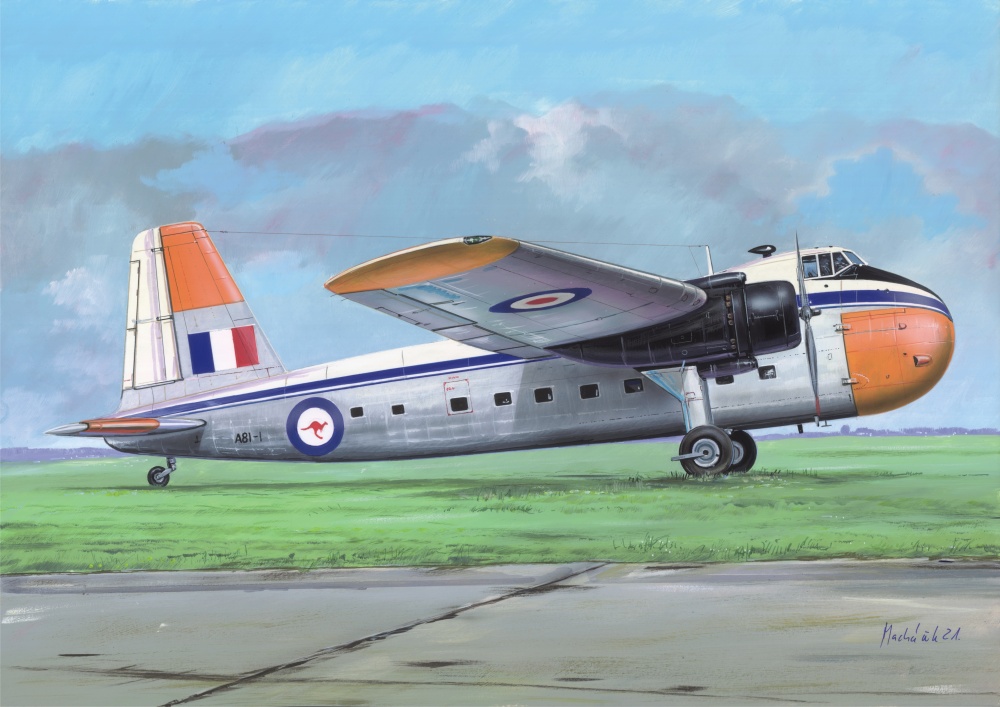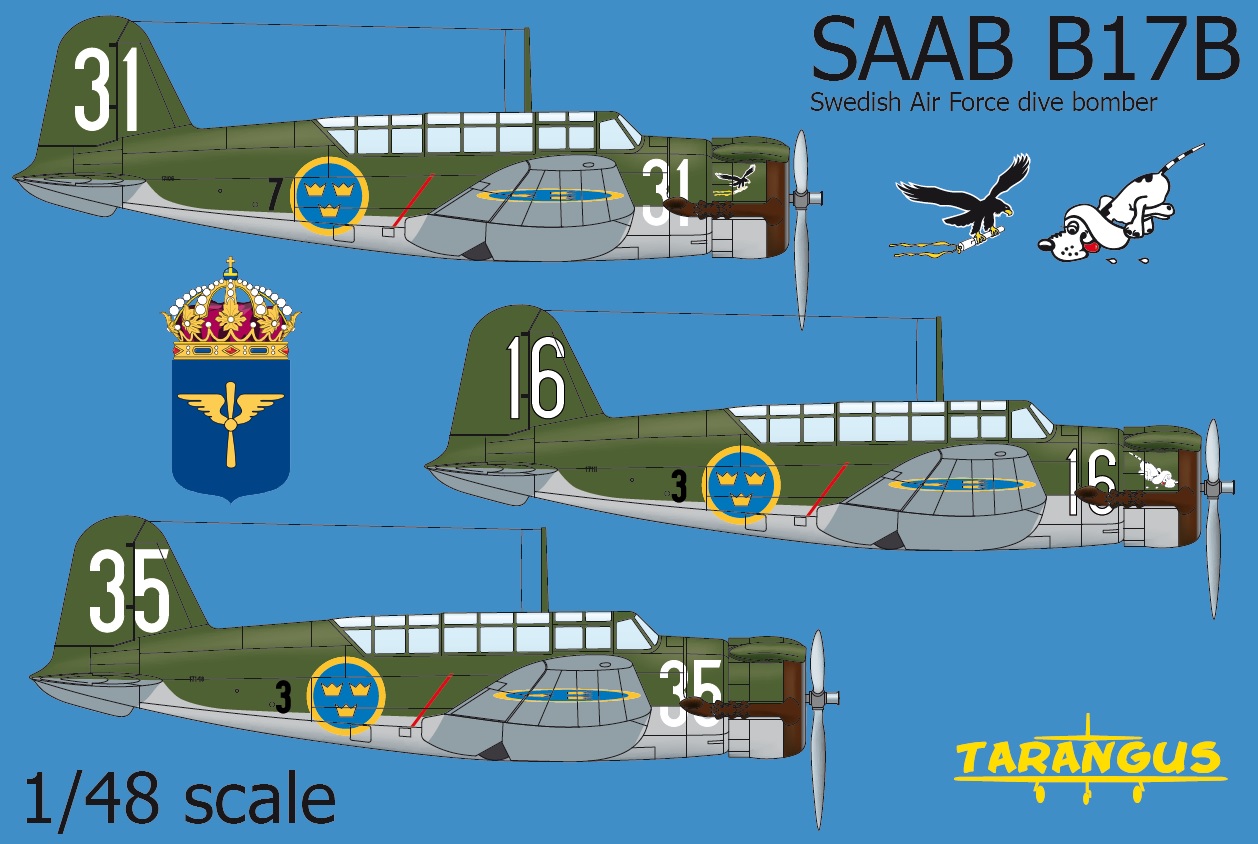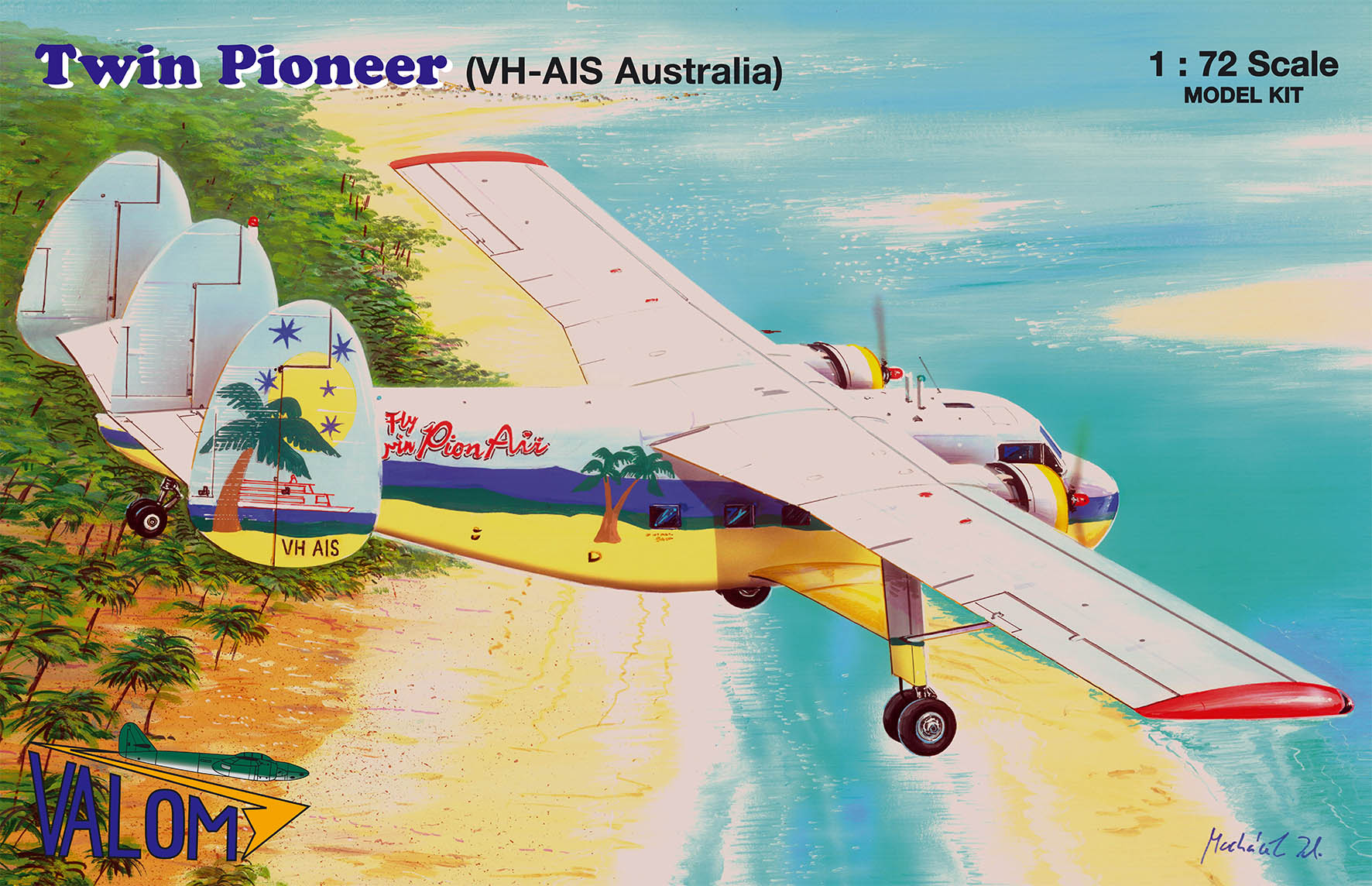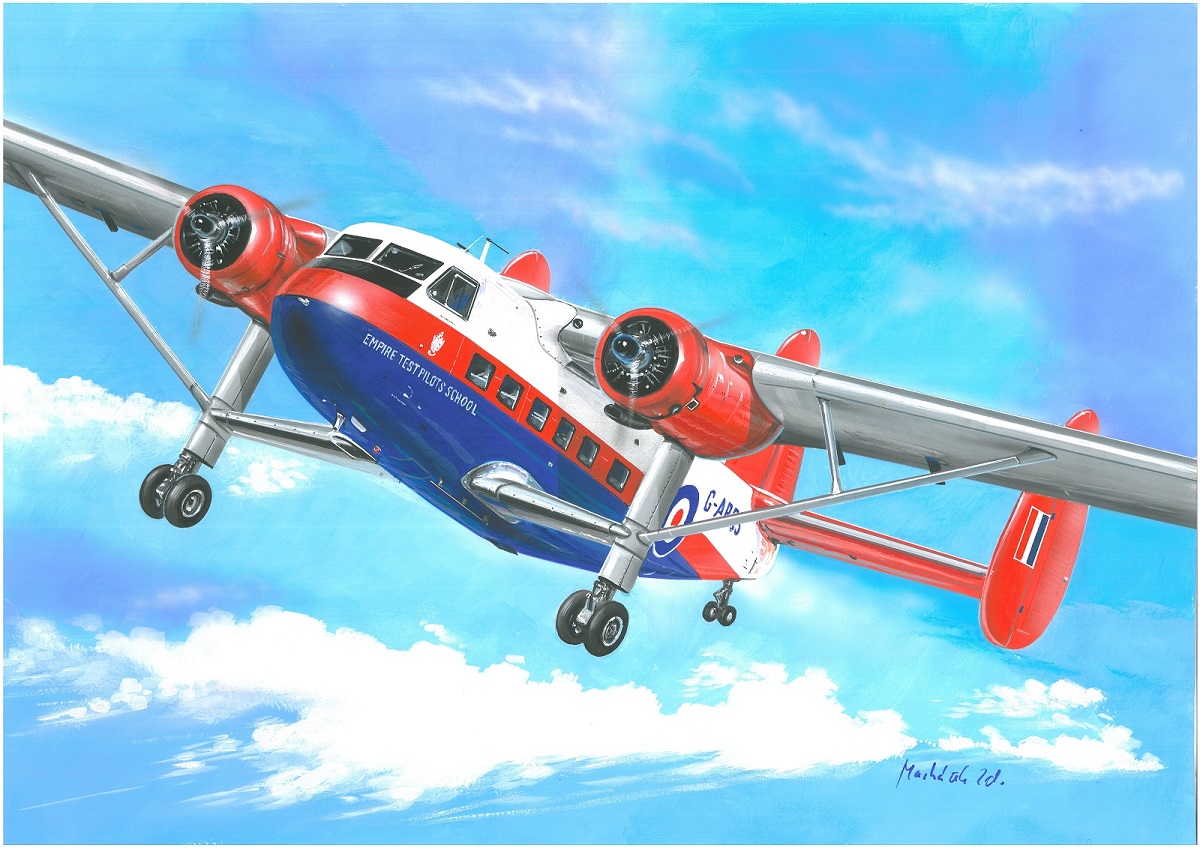Hračky
Celkem 187 produktů
1/32 Gotha UWD. Highly detailed plastic Model kit with PE parts to build a planeScale 1:32not built/painted The unique Gotha UWD was one of several different twin engine seaplanes ordered by the German Navy to fit their requirements for a long range reconnaissance and torpedo carrying aircraft (although there is no evidence to suggest it was ever armed with a torpedo). The Gotha UWD was developed from the G.1 land plane and was completed in December 1915. It was described as easy to fly, able to take to the air with ease and was smooth on landing. In a preview of things to come, Gotha UWD 120 was used to bomb England during early 1916. -274 high-quality injection moulded plastic parts. -4 photo-etched metal detail parts. -2x Daimler-Mercedes 160hp D.III engines. -63cm wingspan. -10kg Carbonit bombs & bomb dropping ‘proboscis’, counter rotating propellers and optional map & document case and camera. -24 page fully illustrated instruction manual. -High quality Cartograf decals for Gotha UWD 120 which served with See Flieger Abteilung 1 in 1916
1/32 P-47D Thunderbolt - Super Riveting Set - Riveting Sets - Hasegawa. Package contents:1x P-47D - Riveting Set 1/32 - 3210221x P-47D Thunderbolt - Stencils + Placard - 1/32 - 2320291x P-47D Thunderbolt - Seatbelts 1/32 - 1325321x P-47D Thunderbolt - Masks 1/32 - 632420 Instructions:Convenient undercoat is Mr. Surfacer 1000 or Mr. Base White 1000.*Wipe the surface with a damp cloth, remove dust and grease.Cut the required part from riveting sheet.Remove top translucent paper and dip rivets in the warm water for approx. 15 seconds.When rivets are separated from its carrier paper apply them on the surface. We recommend to use a spot of Mr. Mark Softer.Find appropriate position and then push the liquid from below the transfer. The purpose is to get each rivet in touch with the surface.Let it dry for min. 2 hours, but optimal time could be e.g. over the night.Finally pull of the top transparent foil / film with sharp tweezers and clean the marks caused by transfer glue.* While application on coloured surfaces it is needed to make a test of adhesion and of time which is necessary for appropriate attaching of rivets. Generally the smoother surface the more time needed.
1/32 P-47D Thunderbolt - Super Riveting Set - Riveting Sets - Hasegawa. Package contents:1x P-47D - Riveting Set 1/32 - 3210221x P-47D Thunderbolt - Stencils + Placard - 1/32 - 2320291x P-47D Thunderbolt - Seatbelts 1/32 - 1325321x P-47D Thunderbolt - Masks 1/32 - 632420 Instructions:Convenient undercoat is Mr. Surfacer 1000 or Mr. Base White 1000.*Wipe the surface with a damp cloth, remove dust and grease.Cut the required part from riveting sheet.Remove top translucent paper and dip rivets in the warm water for approx. 15 seconds.When rivets are separated from its carrier paper apply them on the surface. We recommend to use a spot of Mr. Mark Softer.Find appropriate position and then push the liquid from below the transfer. The purpose is to get each rivet in touch with the surface.Let it dry for min. 2 hours, but optimal time could be e.g. over the night.Finally pull of the top transparent foil / film with sharp tweezers and clean the marks caused by transfer glue.* While application on coloured surfaces it is needed to make a test of adhesion and of time which is necessary for appropriate attaching of rivets. Generally the smoother surface the more time needed.
1/72 Bristol 170 Mk.31. The Bristol Type 170 Freighter was a British twin-engine aircraft designed and built by the Bristol Aeroplane Company as both a freighter and airliner. Its best known use was as an air ferry to carry cars and their passengers over relatively short distances. A passenger-only version was also produced, known as the Wayfarer. The Freighter was developed during the Second World War, having attracted official attention from the British Air Ministry, which sought the development of a rugged vehicle capable of carrying various cargoes, including a 3-ton truck. Various changes to the design were made to accommodate their requirements, but being completed too late to participate in the conflict, the majority of sales of the Freighter were to commercial operators. In response to customer demand, an enlarged version to maximise vehicle-carrying capacity, known as the Bristol Superfreighter, was developed.
1/72 Bristol 170 Mk.21. The Bristol Type 170 Freighter was a British twin-engine aircraft designed and built by the Bristol Aeroplane Company as both a freighter and airliner. Its best known use was as an air ferry to carry cars and their passengers over relatively short distances. A passenger-only version was also produced, known as the Wayfarer. The Freighter was developed during the Second World War, having attracted official attention from the British Air Ministry, which sought the development of a rugged vehicle capable of carrying various cargoes, including a 3-ton truck. Various changes to the design were made to accommodate their requirements, but being completed too late to participate in the conflict, the majority of sales of the Freighter were to commercial operators. In response to customer demand, an enlarged version to maximise vehicle-carrying capacity, known as the Bristol Superfreighter, was developed.
1/72 Bristol 170 Mk.31. The Bristol Type 170 Freighter was a British twin-engine aircraft designed and built by the Bristol Aeroplane Company as both a freighter and airliner. Its best known use was as an air ferry to carry cars and their passengers over relatively short distances. A passenger-only version was also produced, known as the Wayfarer. The Freighter was developed during the Second World War, having attracted official attention from the British Air Ministry, which sought the development of a rugged vehicle capable of carrying various cargoes, including a 3-ton truck. Various changes to the design were made to accommodate their requirements, but being completed too late to participate in the conflict, the majority of sales of the Freighter were to commercial operators. In response to customer demand, an enlarged version to maximise vehicle-carrying capacity, known as the Bristol Superfreighter, was developed.
1/72 Bristol 170 Mk.21. The Bristol Type 170 Freighter was a British twin-engine aircraft designed and built by the Bristol Aeroplane Company as both a freighter and airliner. Its best known use was as an air ferry to carry cars and their passengers over relatively short distances. A passenger-only version was also produced, known as the Wayfarer. The Freighter was developed during the Second World War, having attracted official attention from the British Air Ministry, which sought the development of a rugged vehicle capable of carrying various cargoes, including a 3-ton truck. Various changes to the design were made to accommodate their requirements, but being completed too late to participate in the conflict, the majority of sales of the Freighter were to commercial operators. In response to customer demand, an enlarged version to maximise vehicle-carrying capacity, known as the Bristol Superfreighter, was developed.
1/48 SAAB B17B - The first SAAB aircraft. The first SAAB designed and built aircraft was initially an ASJA (SAAB’s predecessor) project called the L-10, a reconnaissance aircraft. When ASJA was merged with SAAB, the airplane was named SAAB 17. It was now also intended as a dive bomber. As the European continent was thrown into war, the lack of engines forced three different versions of the SAAB 17 to be developed; the 17A with Pratt & Whitney Twin Wasp, the 17B with Bristol Mercury XXIV and the 17C with Piaggio P. XIbis R.C.40D. The first prototype flew on May 18 1940 and two years later deliveries commenced.
1/48 SAAB B17B - The first SAAB aircraft. The first SAAB designed and built aircraft was initially an ASJA (SAAB’s predecessor) project called the L-10, a reconnaissance aircraft. When ASJA was merged with SAAB, the airplane was named SAAB 17. It was now also intended as a dive bomber. As the European continent was thrown into war, the lack of engines forced three different versions of the SAAB 17 to be developed; the 17A with Pratt & Whitney Twin Wasp, the 17B with Bristol Mercury XXIV and the 17C with Piaggio P. XIbis R.C.40D. The first prototype flew on May 18 1940 and two years later deliveries commenced.
Plastikový model letadla 1/48 Siebel Si 204D 'German Transport and Trainer Plane'. Model of the German twin-engined trainer and transport aircraft portrayed in the Si 204D variety Content of the model kit: eight sprues, one sprue with clear parts, full colour instructions, decal sheet featuring markings for two German and one Swiss machine. Superbly detailed model, dimension and shapewise accurate Finely engraved panel lines Complet pilot office and cargo compartment Large sheet of decals, printed by Italian Cartograf The type has never been kitted before, with the sole exception of a vacuumformed one Country of origin: Germany / WWII
Plastikový model letadla 1/48 Siebel Si 204D 'German Transport and Trainer Plane'. Model of the German twin-engined trainer and transport aircraft portrayed in the Si 204D variety Content of the model kit: eight sprues, one sprue with clear parts, full colour instructions, decal sheet featuring markings for two German and one Swiss machine. Superbly detailed model, dimension and shapewise accurate Finely engraved panel lines Complet pilot office and cargo compartment Large sheet of decals, printed by Italian Cartograf The type has never been kitted before, with the sole exception of a vacuumformed one Country of origin: Germany / WWII
